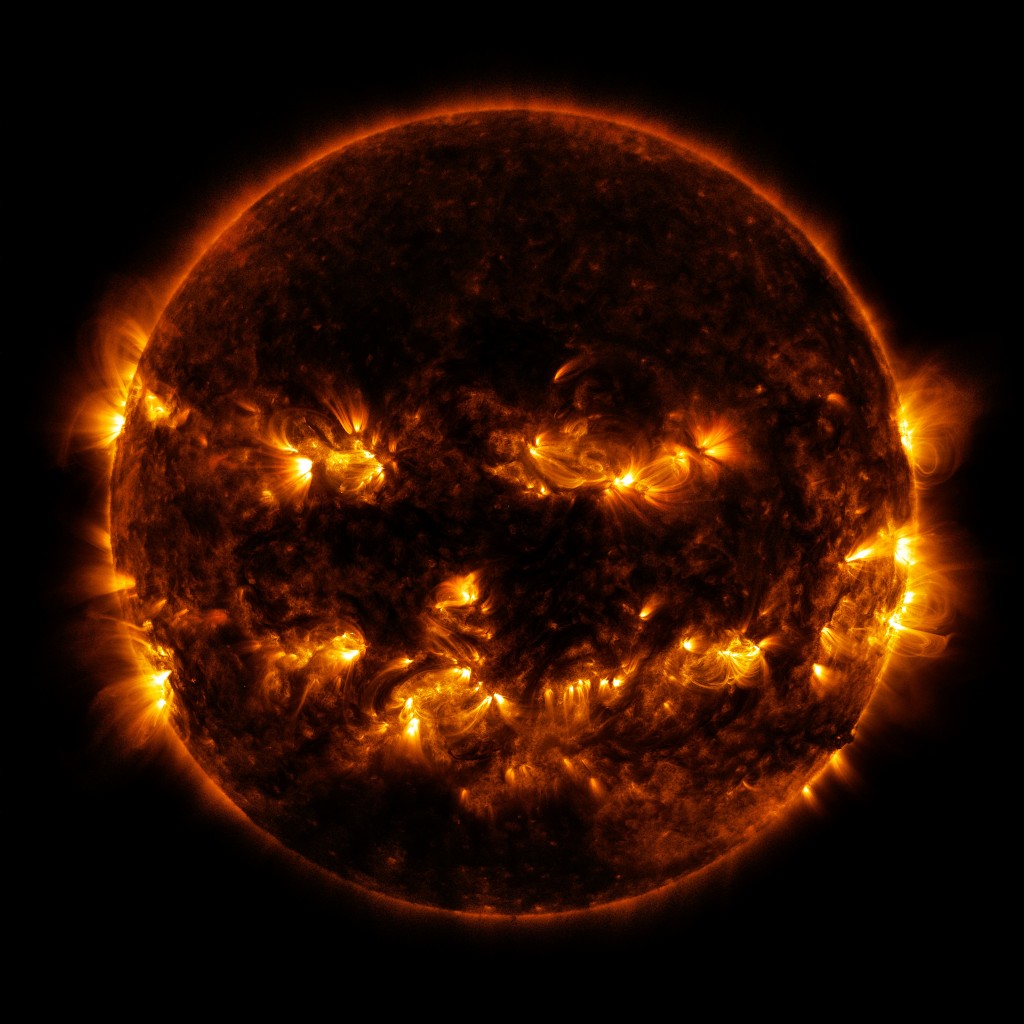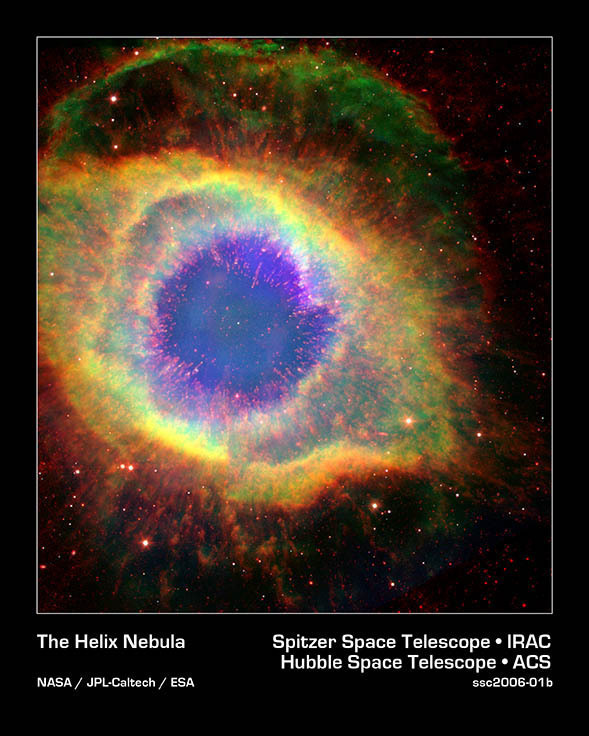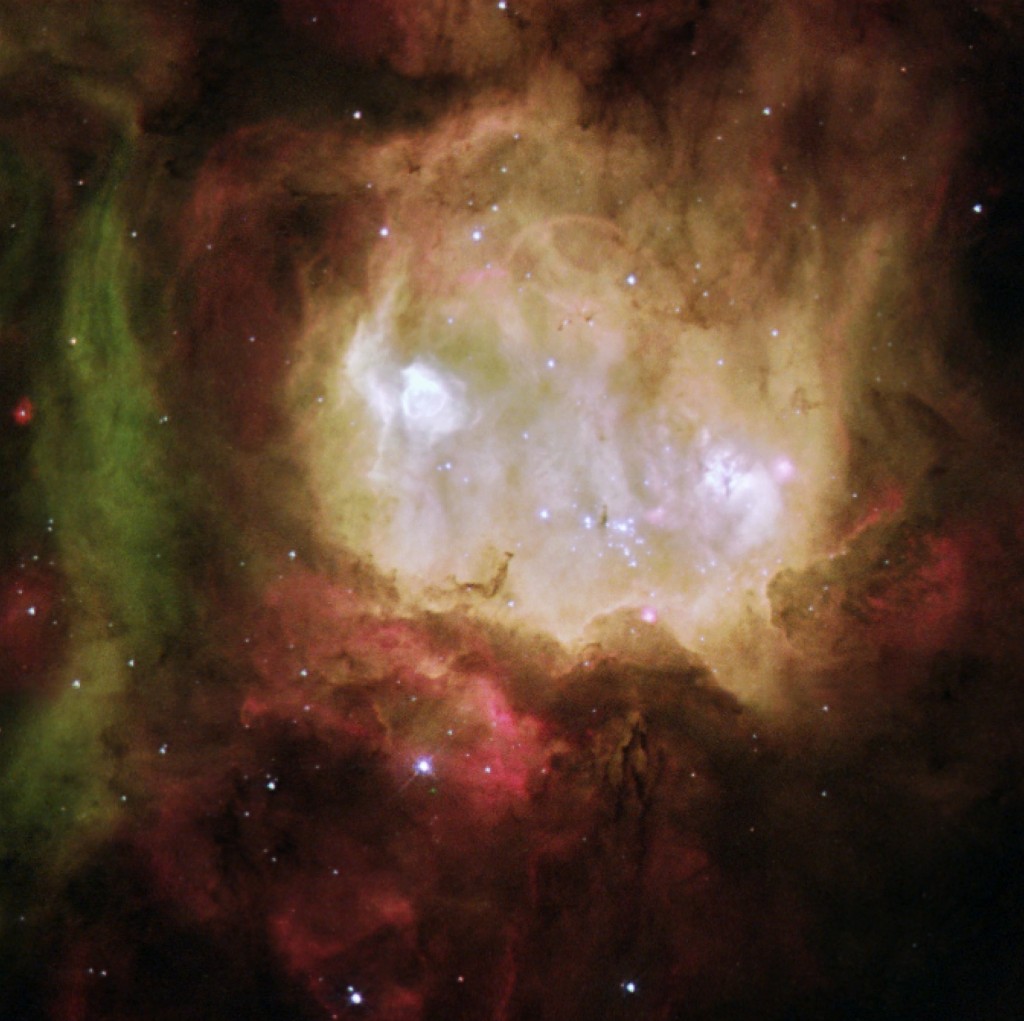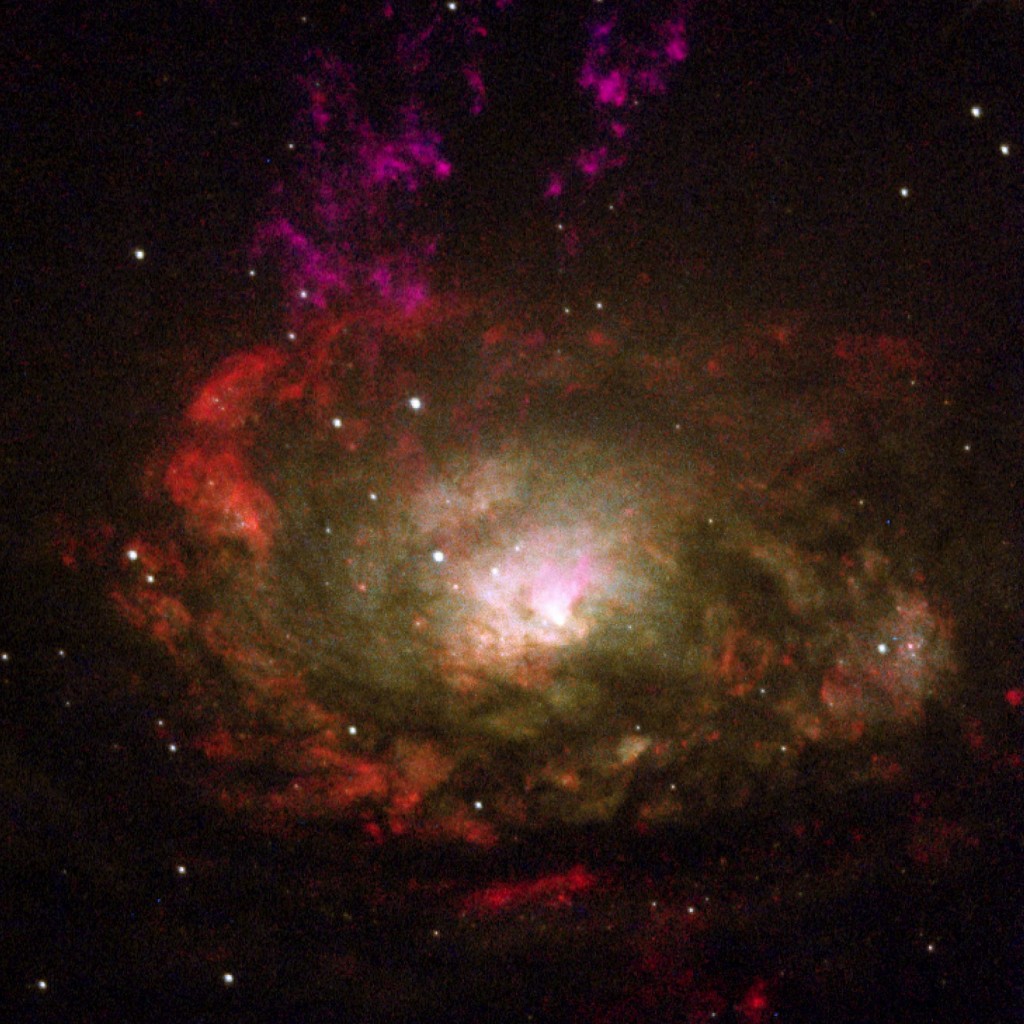Spooky Astronomy, part 5
- By Maggie Masetti
- October 31, 2014
- Comments Off on Spooky Astronomy, part 5
Welcome back for Spooky Astronomy! Over the years, we’ve shared our favorite Halloween-ish images to get into the spirit [no pun intended] of the season!
Past Spooky Astronomy posts: 2010, 2011, 2012, 2013.
Here are a few fresh images for this year:
Jack-o’-lantern! It was nice of the sun to dress up this year! The smiley-face is actually made up of active regions on the sun.
The Helix Nebula is always good for a scare. This view of it looks like a particularly menacing eye.
The Ghost Head Nebula has two glowing white eyes. They are actually very hot “blobs” of hydrogen and oxygen!
What’s that ghostly green thing floating in space, looking like it’s ready to swallow that galaxy? It’s actually Hanny’s Voorwerp. It’s the only visible part of a 300,000-light-year-long streamer of gas stretching around the galaxy, called IC 2497. The greenish Voorwerp is visible because a searchlight beam of light from the galaxy’s core illuminated it. This beam came from a quasar, a bright, energetic object that is powered by a black hole. Guest blogger Koji Mukai actually wrote about it on our blog.
Stare into this witch’s cauldron, but be careful not to fall in! This is the black hole-powered core of a nearby active galaxy.
This ghostly apparition in Cepheus is a faint reflection nebula.
“DON’T BLINK. Blink and you’re dead. They are fast. Faster than you can believe. Don’t turn your back. Don’t look away. And don’t blink. Good Luck.”
Wait, no, that’s not a weeping angel from Doctor Who – it’s a 9.5-light-year-tall tower of gas in the Eagle Nebula.
Whew. Good thing. It was hard keeping my eyes open. I’m just going to go ahead and close them for a second…









